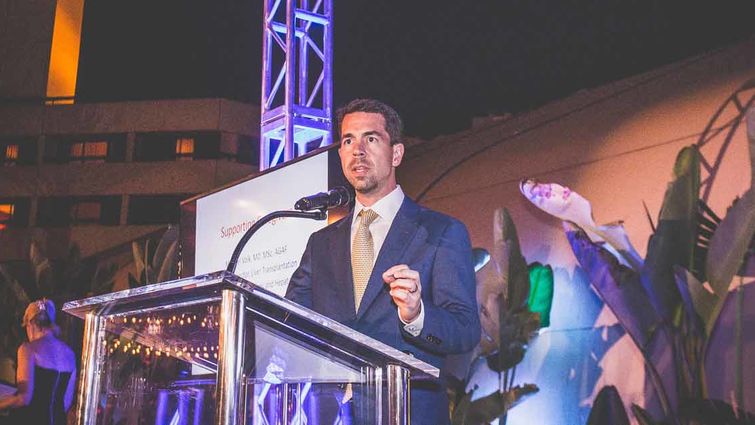
Dr. Michael Volk
A liver specialist at Loma Linda University Health received a $994,000 grant to create a nationwide database designed to help improve care to liver disease patients, many of whom are subject to gaps in care when seen by different healthcare providers.
Michael Volk, MD, division head for Loma Linda University Health’s Gastroenterology and Hepatology Department, is the principal investigator of the grant, which was awarded earlier this month by the American Association for the Study of Liver Diseases (AASLD).
The goal is to implement a centralized system for centers across the country to submit data, track and compare their performance, and collaborate in quality improvement. The system also engages patients and caregivers to participate via a patient portal.
“We’re hoping to cure the current healthcare system deficiency in quality care for cirrhosis patients by equipping both patient and doctor with the necessary tools to effectively implement preventative and recommended care,” Volk said.
Chronic liver damage patients across the country frequently don’t receive adequate therapy because of lapses in the present quality care system, Volk said. According to his 2014 article, “Improving Quality of Health Care for Patients with Cirrhosis,” published in the journal Gastroenterology, those treatment gaps included follow-up care, preventive care, recommended care and population analysis. This was largely because there is no healthcare tracking system available to physicians, many of whom treat patients on a case-by-case or symptom-by-symptom basis.
“Only 15-50 percent of patients get the treatment they need that will actually help them,” Volk said. “Most centers lack the resources to efficiently track patients with cirrhosis to know if they are getting adequate care.”
“By creating an individualized preventive care plan, the chances of survival for patients living with cirrhosis increases dramatically,” Volk said.
The three-year project will initially launch at 10 sites across the country and then expand from there. The infrastructure will also be used to create an Alternative Payment Model, thus aligning reimbursement with optimal patient management.
This framework has been successfully used for several other chronic diseases, Volk said. His team will test for the first time on chronic liver disease and cirrhosis.
